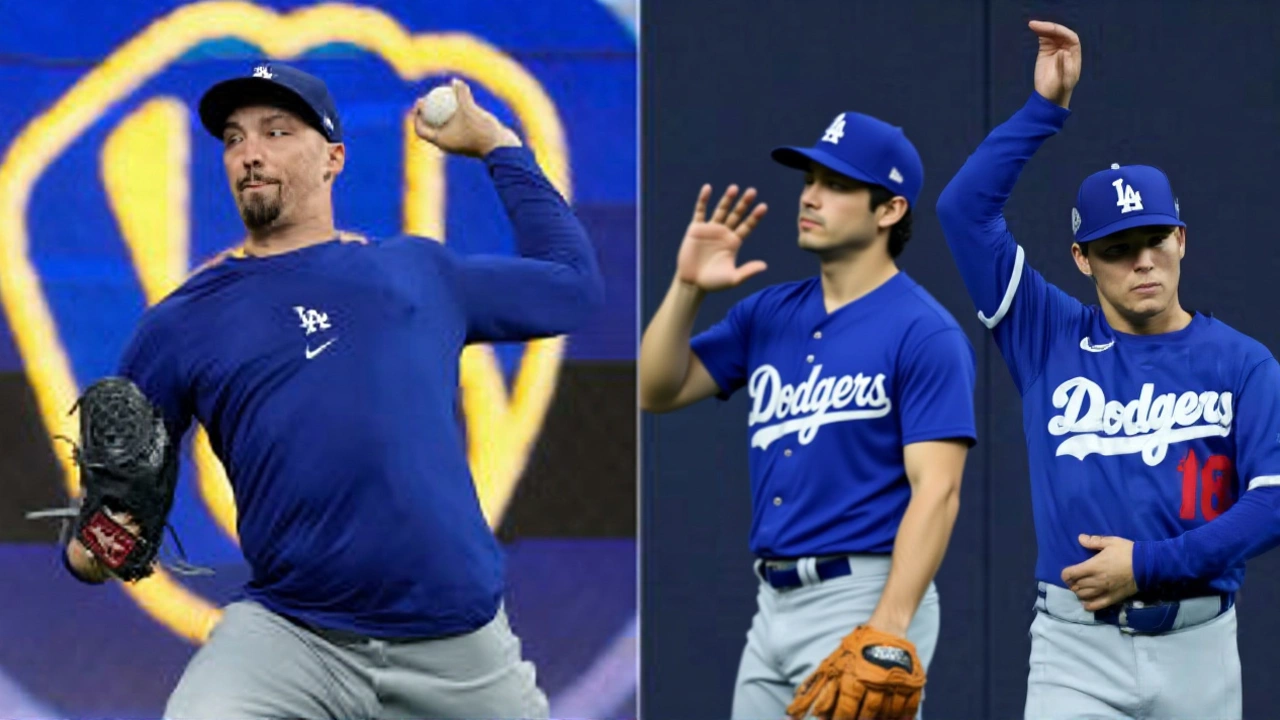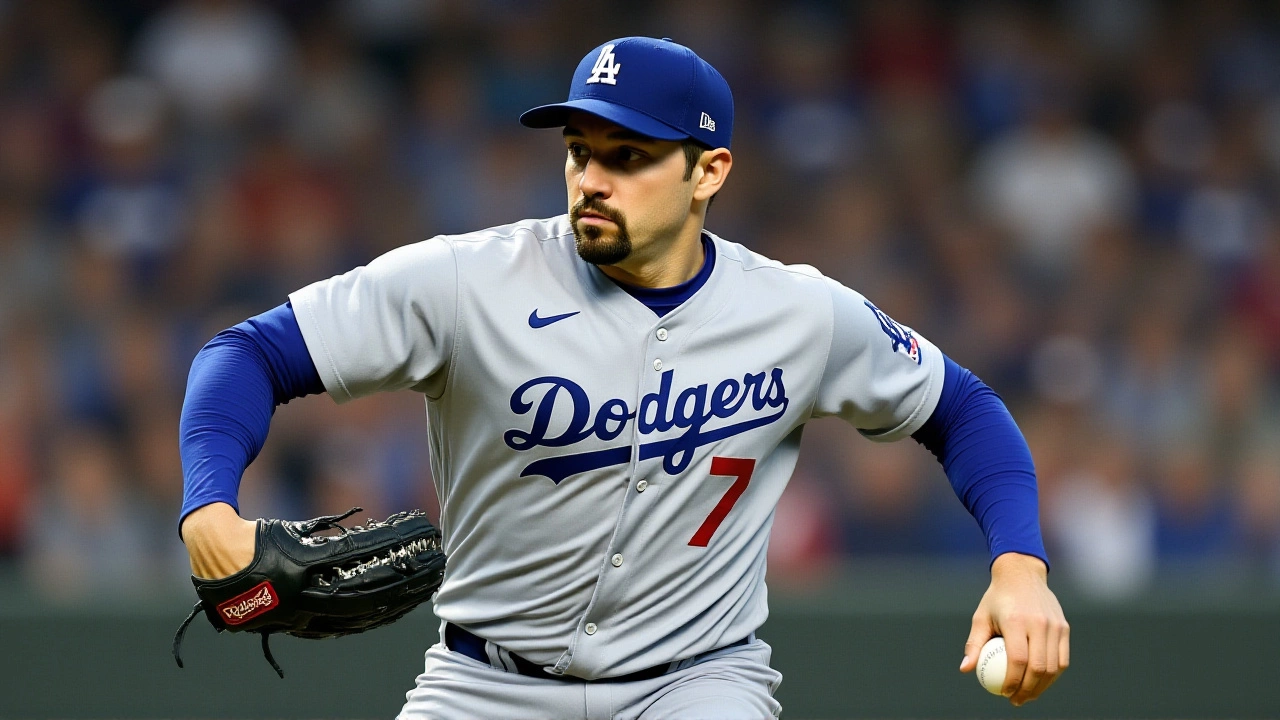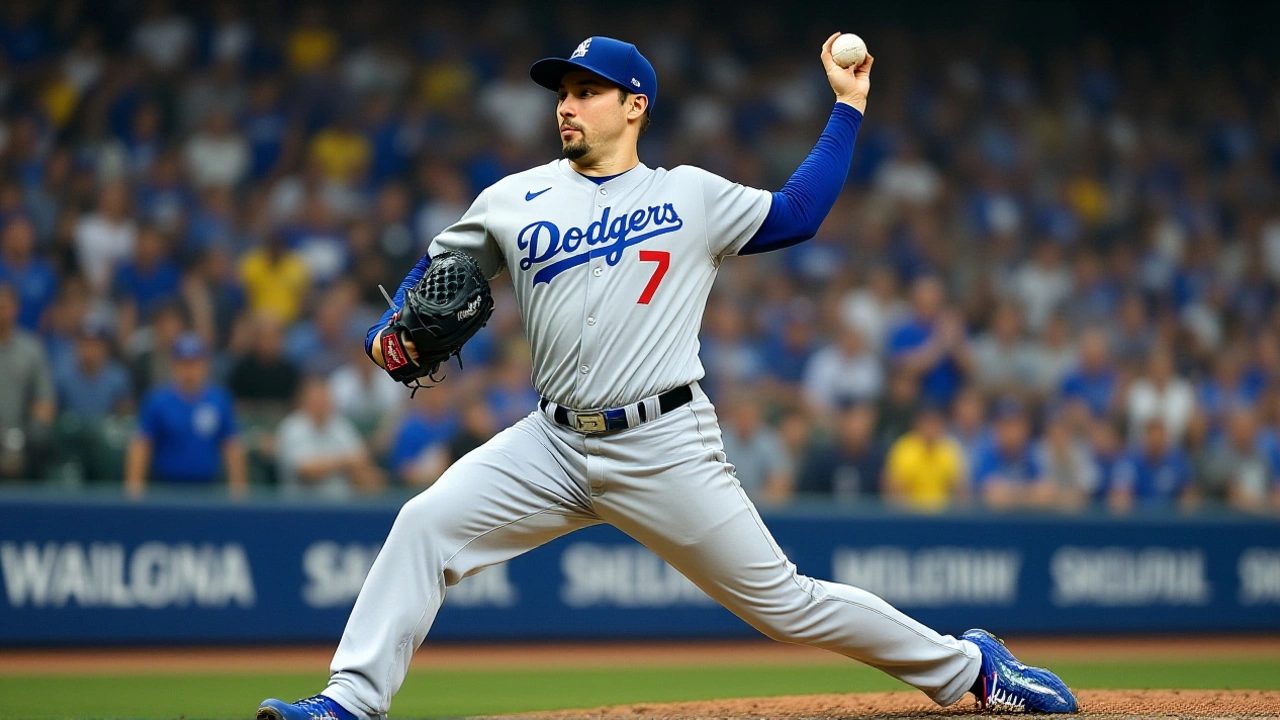When Blake Snell, starting pitcher of Los Angeles Dodgers took the mound at American Family Field on October 13, 2025, the National League Championship Series Game 1American Family Field turned into a showcase of dominance that left fans buzzing and analysts scrambling for words.
The Milwaukee Brewers entered the game expecting a tight battle, but Snell surrendered only one hit across eight innings, struck out ten batters and walked none on 103 pitches. In the bottom of the first, Freddie Freeman launched the Dodgers' first run with a solo home run – his first of the 2025 postseason – giving Los Angeles a 1‑0 lead that would later stretch to two.
How Snell Dominated Every Opposing Hitter
Snell's toolbox was on full display. Of the 62 pitches he threw to right‑handed batters, 35 were changeups, a staggering 56.5% of his total. Those changeups generated a 65.5% whiff rate – 38 swing‑and‑misses on 58 swings – the fifth‑highest single‑pitch whiff rate in a postseason since pitch‑tracking began in 2008. Even left‑handed hitters weren’t spared; his four‑seam fastball still sat in the high 90s, forcing the Brewers to play catch‑up throughout the night.
When the ninth inning arrived and the Dodgers led 2‑0, relief man Roki Sasaki entered the game. He allowed a sacrifice fly by William Contreras, trimming the lead to 2‑1. But with two outs and a full count, Snell’s earlier work held firm and the Dodgers closed out the game.
Historical Context – A Night That Echoes the Greats
Snell’s eight‑inning, one‑hit effort is the shortest path to a near‑perfect game in a playoff setting since Don Larsen’s 1956 World Series perfect game. In the live‑ball era (since 1920), only three pitchers with 20+ postseason innings have matched a sub‑1.00 ERA and 20+ strikeouts in a single series: Sandy Koufax (1965), John Smoltz (1996) and Justin Verlander (2013). Snell now joins that elite club, a fact that has already sparked conversation about his place among modern aces.
- Earned run average (ERA) this postseason: 0.86
- Total strikeouts in three starts: 28
- Changeup whiff rate: 65.5%
- Number of pitches per inning: 12.9 on average
- Historical rank for single‑pitch whiff rate: 5th since 2008

Reactions from Players, Coaches, and Opponents
“I think it’s the most dominant performance we’ve seen against us in my ten years here,” said Pat Murphy, the Brewers’ manager, after reviewing the tape. His words carried weight, reflecting the respect even adversaries have for Snell’s current form.
Dodgers pitching coach Mark Prior praised the pitcher’s confidence, noting, “He’s throwing all four pitches any time. That forces hitters to make split‑second decisions.” Meanwhile, veteran ace Clayton Kershaw added, “When Blake’s right, he’s the best pitcher in the game. Having that guy set the tone is huge for us.”
Why This Matters for the Dodgers’ NLCS Run
The win puts Los Angeles ahead 1‑0 in a best‑of‑seven series and fuels speculation that a sweep is possible. Manager Dave Roberts made the unconventional call to pull Snell after eight innings despite the low pitch count, mirroring his controversial decision to remove Snell in Game 6 of the 2020 World Series when he was with Tampa Bay. The move signals Roberts’ confidence in the bullpen and an unwillingness to gamble on fatigue, even when the ace looks like he could finish the game.
Beyond the immediate series, the performance cements Snell’s role as the Dodgers’ ace heading into a possible World Series showdown against the Toronto Blue Jays, who are slated to start the series on October 25, 2025, at the Rogers Centre. Snell’s five‑year, $182 million contract, signed in the 2024‑25 offseason under the direction of team president Andrew Friedman, now feels like a bargain when measured against his postseason output.

Looking Ahead – The Road to Toronto
If the Dodgers clinch the NLCS in Game 2, they’ll head to Toronto with a short rest but a massive momentum boost. Snell is slated to start Game 1 of the World Series, giving the Blue Jays a preview of the kind of pressure they’ll face. The Blue Jays’ front office, led by President Mark Shapiro, will likely adjust their lineup to counter Snell’s changeup—perhaps by loading the left side of the plate or deploying more right‑handed relievers early.
For now, fans in Milwaukee will replay the night’s highlights: the silent crowd as Snell’s changeup fluttered past the zone, the roar when Freeman’s homer sailed over the left‑field wall, and the collective gasp as Sasaki’s fly ball briefly narrowed the lead. It’s a night that will be referenced in Dodgers lore for years to come.
Frequently Asked Questions
How does Blake Snell’s performance affect the Dodgers’ chances in the World Series?
Snell’s dominant Game 1 gives Los Angeles a psychological edge and confirms their ace is healthy after an August illness. If he repeats this form, the Dodgers will force opponents to build lineups around his changeup, potentially limiting offensive production throughout the series.
What made Snell’s changeup so effective in this game?
The changeup sat low in the zone and dropped more sharply than usual, creating a 65.5% whiff rate. Combined with his fastball velocity, hitters were forced to swing early on pitches that arrived later, resulting in weak contact or complete misses.
Did the Brewers have any chance to come back after Snell’s exit?
The Brewers narrowed the gap to 2‑1 with a sacrifice fly by William Contreras, but with two outs and a full count, they lacked a batter able to break the deadlock. Their offense struggled against Snell’s mix, and the bullpen couldn’t generate enough momentum.
How does Snell’s NLCS performance compare to past postseason ace outings?
It ranks alongside the likes of Sandy Koufax (1965) and Justin Verlander (2013) for sub‑1.00 ERA with 20+ strikeouts over a series. Few pitchers have matched his combination of low pitch count and high strikeout efficiency in a playoff setting.
What are the Dodgers’ next steps after this win?
They’ll look to start Game 2 tomorrow, likely keeping their bullpen rested while letting Snell recover fully. The coaching staff will analyze the Brewers’ approach to fine‑tune their own hitting strategy, especially against changeups, before facing the Blue Jays in the World Series.
